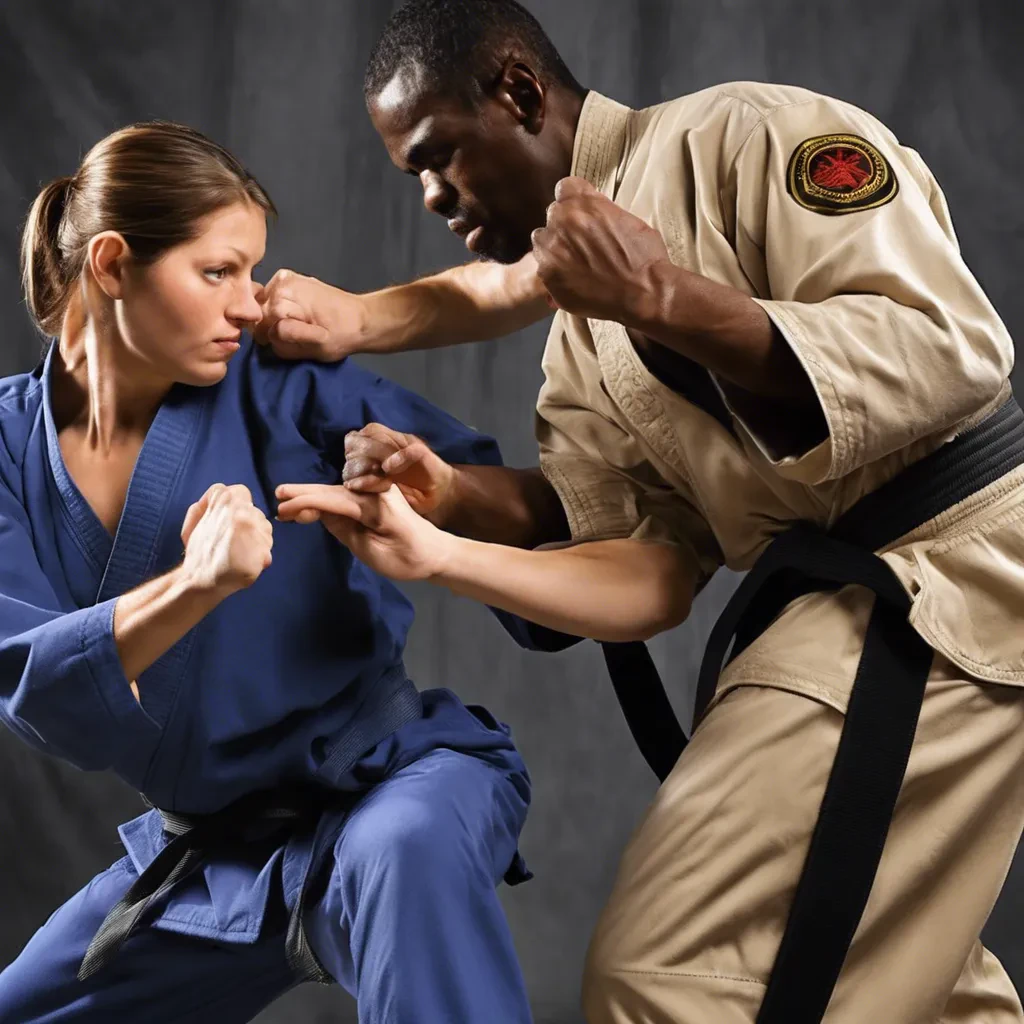Understanding Your Goals
Before embarking on the journey of joining a martial arts class, it is essential to clearly define what you hope to achieve from your training. The practice of martial arts encompasses a wide range of disciplines, each tailored to different objectives and personal aspirations. Whether you are seeking self-defense skills, physical fitness, mental discipline, or a boost in self-confidence, understanding your goals will significantly influence your choice of martial art and the type of school or instructor that will best support your ambitions.
Self-defense is one of the most common reasons individuals pursue martial arts training. If your primary goal is to learn techniques for personal protection, disciplines such as Krav Maga, Brazilian Jiu-Jitsu, or Muay Thai are particularly effective. These styles focus on practical, real-world combat scenarios, providing you with the skills to respond to threats quickly and effectively. Conversely, if physical fitness is your main aim, martial arts like Taekwondo, Kickboxing, and traditional Karate offer rigorous workouts that boost cardiovascular health, enhance muscular strength, and improve overall endurance.
Mental discipline is another key area where martial arts shine. Disciplines such as Aikido or Tai Chi emphasize fluid movements and deep concentration, making them excellent choices for those seeking to enhance their focus, mindfulness, and stress management. These arts promote inner peace and resilience, assisting practitioners in cultivating a balanced and disciplined mind. Moreover, martial arts can profoundly impact self-confidence. The repetitive practice and mastery of techniques foster a sense of accomplishment and empowerment. For younger individuals or those looking to build self-esteem, any martial art that encourages consistent progress, such as Judo or Wing Chun, can be incredibly beneficial.
Lastly, if competitive fighting is your primary interest, seeking out schools with a strong emphasis on sports combat or Mixed Martial Arts (MMA) might be your best bet. These environments are designed to prepare students for competitive scenarios, ensuring you receive specialized training and opportunities to test your skills in a controlled setting. By outlining your goals, you create a roadmap that guides you toward the most suitable martial arts discipline and training environment, setting the stage for a successful and fulfilling experience.
Researching Different Martial Arts Styles
When considering joining a martial arts class, it is essential to have an understanding of the different styles available, each with its unique history, techniques, and learning outcomes. Diverse martial arts styles serve various purposes, from self-defense to physical fitness and mental discipline. This overview will introduce some of the prominent martial arts styles, aiding in your quest to select the one that aligns with your interests and aspirations.
Karate, originating in Okinawa, Japan, is renowned for its striking techniques involving punches, kicks, knee strikes, and open-hand techniques. It places a significant emphasis on discipline, form, and the perfection of techniques through repetitive practice. Karate practitioners often engage in kata – pre-arranged movements that simulate combat scenarios – and kumite, which is sparring with a partner.
Taekwondo, which hails from Korea, is distinguished by its dynamic and high-flying kicks. It also incorporates hand strikes and blocks, but its specialty lies in powerful and rapid kicks. This martial art encourages physical conditioning, flexibility, and mental resilience. Taekwondo practitioners regularly participate in competitive tournaments, demonstrating their skills in sparring and poomsae – patterns of movement, similar to kata in Karate.
Brazilian Jiu-Jitsu (BJJ) focuses on ground fighting and submission grappling. It evolved from traditional Japanese Jiu-Jitsu but has been significantly developed in Brazil. BJJ teaches students to use leverage and technique to control and submit opponents, making it particularly effective for self-defense. Practitioners often spar with resistance (rolling) to apply techniques in realistic scenarios, fostering a deep understanding of body mechanics and strategy.
Muay Thai, also known as the "Art of Eight Limbs," originates from Thailand and is distinguished by its use of fists, elbows, knees, and shins. This martial art emphasizes powerful strikes and clinch fighting. It is highly effective for stand-up combat and offers comprehensive conditioning to improve strength, endurance, and agility.
Each martial arts style offers unique benefits and learning experiences. Whether your objective is self-defense, physical fitness, competition, or personal growth, understanding these distinct characteristics can guide you in selecting a martial arts class that best fits your needs.
Evaluating the Instructors
When considering joining a martial arts class, the instructor's qualifications and teaching style are cornerstone elements that can significantly shape your training experience. An instructor's certification is a primary criterion to examine. Certified instructors have undergone rigorous training and testing by reputable martial arts organizations, ensuring a high level of expertise and adherence to standardized methodologies.
Experience is another crucial factor. Instructors with extensive experience not only possess a deep understanding of martial arts techniques but also have the practical know-how to handle a variety of student skill levels and learning paces. It is advisable to inquire about the instructor’s martial arts lineage, competitive history, and years devoted to teaching. An instructor with a proven track record of success and longevity in the field can often provide more comprehensive and nuanced instruction.
Teaching methods vastly differ among instructors and martial arts schools. Some instructors may focus on traditional methods, emphasizing discipline, forms, and precise technique execution. Others might incorporate modern approaches, blending physical conditioning with practical self-defense scenarios. It is beneficial to understand the teaching approach by observing a trial class. This allows you to see firsthand how the instructor interacts with students, provides feedback, and manages the class environment.
During a trial class, pay attention to the instructor's communication style. Effective instructors are clear, patient, and encouraging, fostering a positive learning atmosphere. They should be adept at breaking down complex techniques into understandable segments and offer personal insights to help you improve. Compatibility with your learning style is paramount; the right instructor should make you feel both challenged and supported.
In summary, evaluating an instructor’s qualifications, experience, and teaching methods is essential for a rewarding martial arts journey. Carefully considering these factors ensures that you will be guided by an expert who can cater to your growth and development effectively, ultimately enhancing your martial arts experience.
School and Facility Considerations
When evaluating a martial arts school, one of the primary aspects to consider is the learning environment it offers. The location of the school plays a crucial role; it should be conveniently accessible, allowing you to attend classes regularly without significant travel. A martial arts school with a well-structured class schedule offers flexibility, catering to individuals with varying commitments and ensuring you can integrate training into your routine smoothly.
The quality of training facilities is another vital consideration. A well-maintained dojo enhances the training experience, providing an atmosphere conducive to focused learning and practice. Look out for a space that is clean, well-lit, and adequately ventilated. Proper hygiene is essential to prevent any potential health issues, especially in a physically demanding activity like martial arts.
Availability of equipment is equally significant. Schools should be equipped with essential martial arts gear, such as mats, pads, and protective equipment. This ensures that students can practice techniques safely and effectively. Additionally, access to specialized equipment can be a mark of a facility’s commitment to comprehensive training. Consider if the school offers modern conveniences like changing rooms and showers, as these can greatly enhance your overall experience, especially after rigorous training sessions.
Lastly, the overall atmosphere of the school is a determinant of a positive learning experience. Observe how the staff and instructors interact with students. A welcoming, respectful, and supportive environment fosters motivation and helps in building a cohesive learning community. Pay attention to whether the culture promotes inclusivity and whether there are clearly established norms to ensure the safety and well-being of all participants.
By thoroughly assessing these factors - location, class schedules, facility quality, equipment availability, and atmosphere - you can make an informed decision and choose a martial arts school that best fits your needs and supports your journey in martial arts training.
```html
Class Size and Student Demographics
When contemplating joining a martial arts class, one of the primary factors to consider is class size. Class size can significantly affect the quality of instruction and the overall learning experience. Smaller classes, usually consisting of 10 to 15 students, can offer more personalized attention from the instructor. This fosters a conducive environment for detailed feedback and hands-on correction, which can be instrumental for beginners who require close monitoring to ensure proper technique and safety.
On the other hand, larger classes may lack this personalized approach but often bring a sense of community and camaraderie. Connecting with a greater number of peers can offer diverse sparring experiences and broader social interactions, which can be motivating and exhilarating for some students. However, it is crucial that the instructor-to-student ratio remains manageable to prevent compromised quality of instruction.
The demographics of the student body also play a significant role in shaping your martial arts journey. Age range, experience levels, and diversity among students can greatly influence the social and learning environment. For example, mixed-age classes can facilitate a rich exchange of knowledge and foster respect among generations, though they might also present challenges in terms of physical compatibility and instructional pace.
Experience levels within your class can also offer a balanced dynamic. A blend of beginners and advanced students provides opportunities for peer learning, where newer students can benefit from observing seasoned practitioners. However, this can sometimes create discrepancies in training intensity and expectations, which might be discouraging for some.
Lastly, diversity within the student population can enrich your martial arts practice by exposing you to various perspectives and fostering an inclusive atmosphere. Classes that welcome students from different backgrounds tend to cultivate a supportive community spirit, engendering mutual growth and learning.
``````html
Cost and Membership Options
When considering joining a martial arts class, it is paramount to evaluate the financial commitments involved. Costs can vary significantly depending on the martial arts school and the specific discipline you are interested in. Standard expenses typically include tuition fees, which can range from $50 to $200 per month, depending on the location and the reputation of the school. Premium institutions or those with highly esteemed instructors may charge higher fees.
In addition to tuition, prospective students should consider the costs of uniforms and equipment. Martial arts often necessitate specific attire such as gis, belts, and protective gear. The cost of a uniform can range from $20 to $100, with higher quality or brand-name items leaning towards the upper end of the spectrum. There may also be equipment costs for items such as gloves, pads, or weapons used in certain disciplines, which can add another $50 to $200 to initial expenditures.
Moreover, it is crucial to be aware of potential hidden fees. These can include registration fees, testing or grading fees for belt advancements, and sometimes even charges for attending special seminars or tournaments. It is advisable to inquire about all possible additional costs upfront to avoid any surprises later.
Martial arts schools generally offer various membership options to suit different commitment levels and budgets. Monthly subscriptions are common, allowing members to pay a set fee each month for unlimited classes. This option offers flexibility but can be more expensive in the long term. Alternatively, some schools provide drop-in classes where students pay per session, typically ranging from $10 to $20 per class, which is suitable for those with unpredictable schedules or who wish to sample different classes.
For individuals looking for a more economical option, long-term contracts might be attractive. These agreements, often spanning six months to a year, usually offer a discounted rate but require a commitment for the entire duration. It is crucial to read the terms carefully to understand the cancellation policy and any repercussions for early termination.
``````html
Evaluating the School's Community and Culture
When considering joining a martial arts class, the community and culture of the school play a significant role in your overall learning experience. The environment surrounding your training can either enhance your growth or hinder it. Thus, it is crucial to assess the community spirit within the school. A martial arts school that fosters camaraderie among its students can make your journey more enjoyable and fulfilling. Observing how students and instructors interact can provide valuable insights into the school's culture.
One way to gauge the school's community is to attend a few classes or observe a session. Pay attention to how students support each other, both in practice and outside the dojo. Do they encourage one another, celebrate achievements, and work together to overcome challenges? A supportive network can be a key factor in sustaining motivation and commitment to training.
Moreover, the school's promotion of values and ethics is another essential aspect to consider. Martial arts, at its core, is not just about physical prowess but also the development of character and discipline. Determine whether the school emphasizes respect, humility, and perseverance. These principles should resonate with your personal beliefs and values. Instructors who lead by example and instill these virtues create a positive and enriching atmosphere.
Additionally, the presence of a diverse student body can signal an inclusive environment where everyone feels welcome. Diversity in age, gender, cultural background, and skill level can offer a richer learning experience. It fosters mutual respect and the exchange of different perspectives, contributing to a more well-rounded education in martial arts.
Ultimately, finding a martial arts school with a culture that aligns with your personal beliefs and offers a supportive and positive environment can significantly impact your journey. The right community will inspire you to grow not just as a martial artist, but as an individual. Make sure to consider these factors when evaluating potential schools to ensure a fulfilling and constructive martial arts experience.
```
Trial Classes and Personal Experience
When considering joining a martial arts class, attending a trial class or introductory session can offer invaluable insights. These trial classes, often provided by various martial arts schools, create an opportunity to experience the training dynamics first-hand, acquaint yourself with the instructors, and gauge the overall atmosphere of the school. By participating in a trial class, you can better evaluate whether the training style and environment align with your personal goals and preferences.
One of the primary benefits of a trial class is the chance to observe and interact with the instructor. Pay close attention to how they communicate, demonstrate techniques, and engage with students. An instructor's demeanor, teaching style, and level of expertise play a crucial role in your martial arts journey. Furthermore, observe how the instructor manages the class and addresses different skill levels. This can give you a sense of how future classes may unfold and whether the instructor can effectively cater to both beginners and advanced students.
The environment of the martial arts school is another critical aspect to consider during trial sessions. Evaluate the cleanliness and upkeep of the facilities. Are the training areas spacious and well-organized? Is the equipment in good condition? The overall ambiance can significantly impact your training experience and long-term comfort. Additionally, take note of the camaraderie among students. A supportive and collaborative training environment can enhance your learning process and motivation.
When attending a trial class, it's essential to reflect on your personal experience. Consider how you felt during the session: Were you engaged, challenged, and motivated? Did you feel a sense of community and support? Evaluating these personal reactions will help you determine if the school aligns with your martial arts aspirations.
Utilizing these observations from trial classes can significantly inform your decision-making process. By considering factors such as instructor interaction, school environment, and personal experience, you can make a well-rounded, informed choice about the most suitable martial arts class for your needs.







